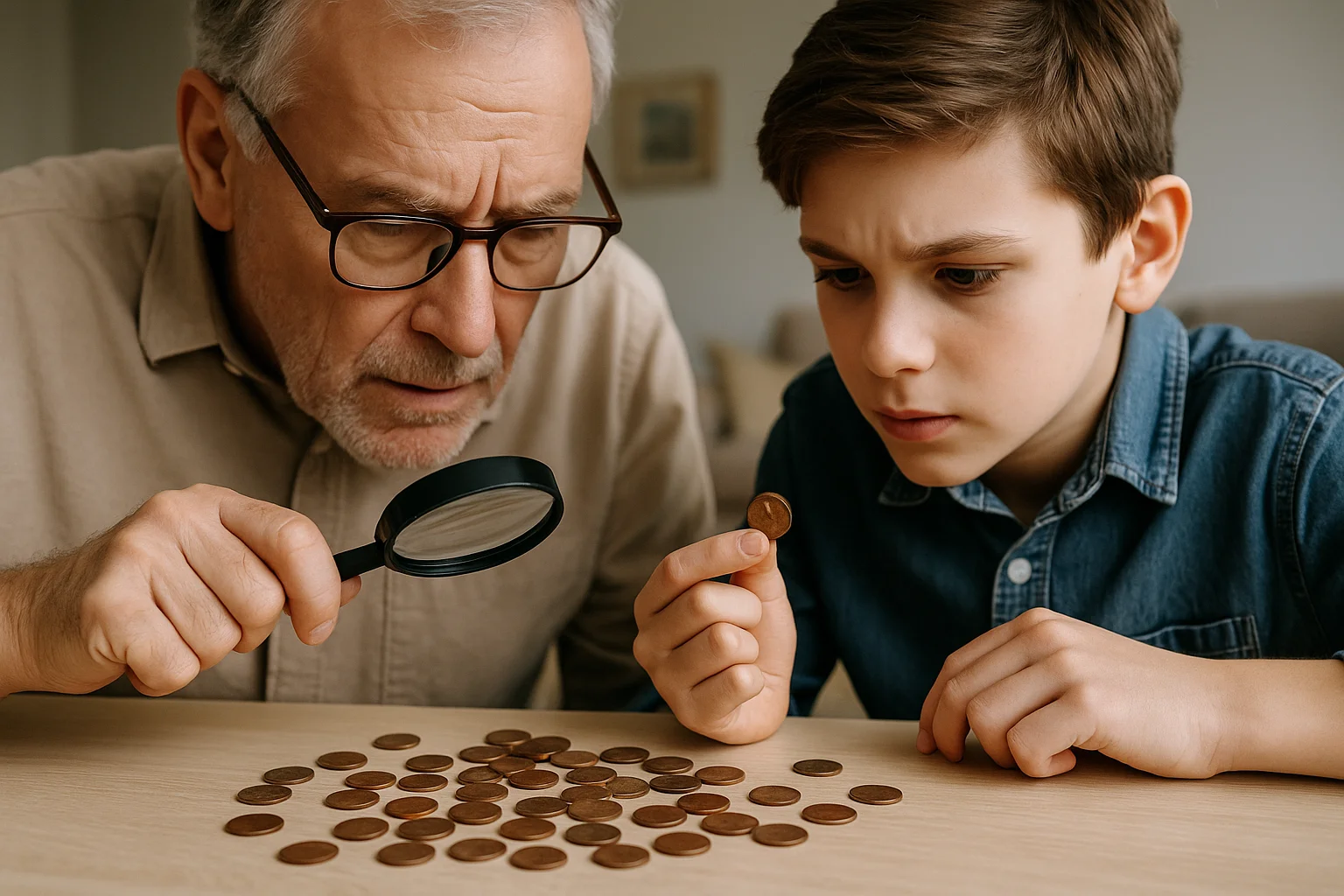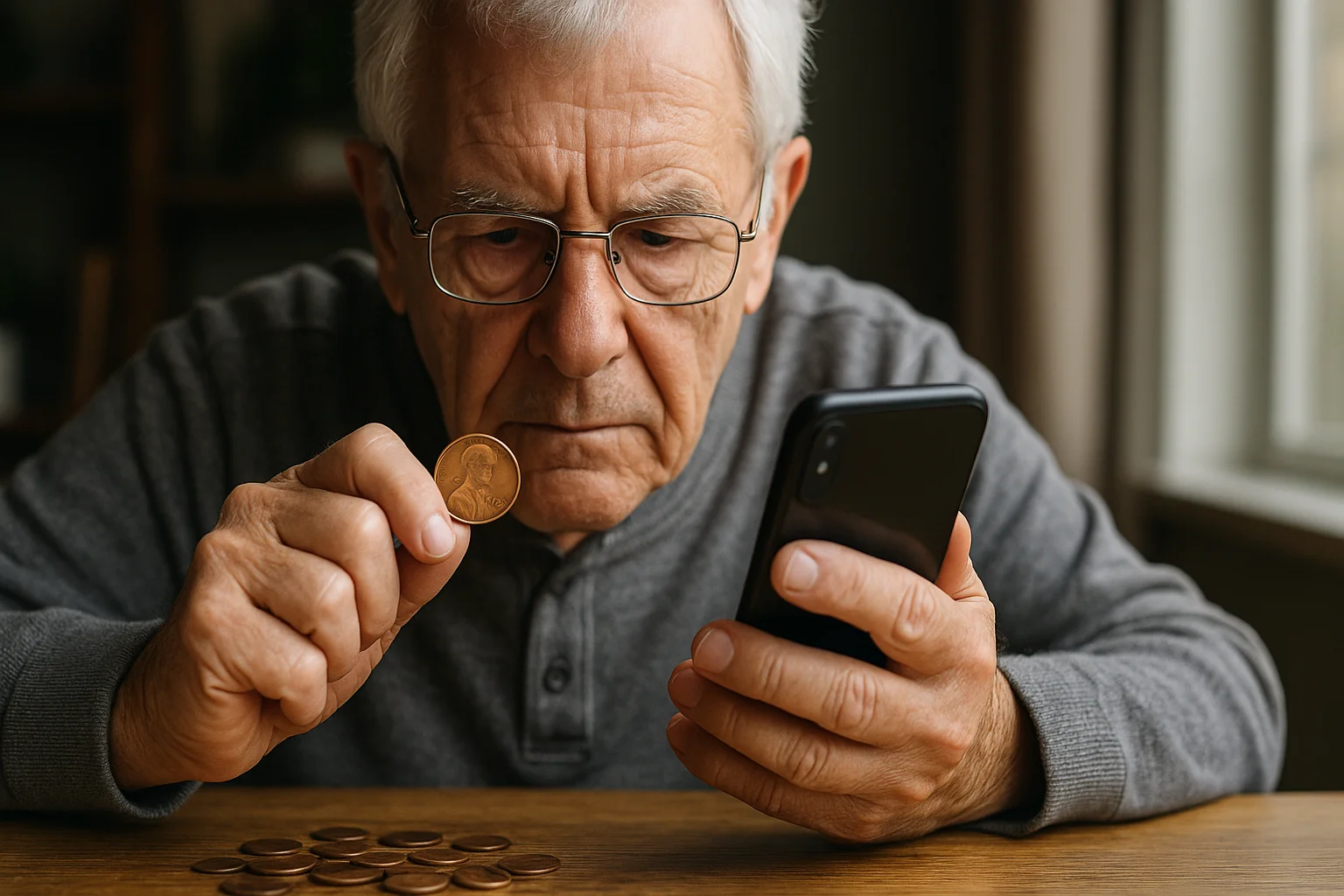Many people do not even realize that among the ordinary copper pennies, long lost in purses or jars with change, there are specimens for which collectors are ready to pay well. They are so-called wheat pennies – coins with the image of ears on the reverse, minted in the United States in the first half of XX century. Some of them are now considered real numismatic finds. For example, interest in the 1951 wheat penny value remains relevant – despite the mass production, it is in this year there are details that can significantly increase the value of the coin. So, today we offer you to study and analyze which wheat pennies are really worth attention, and how to understand whether there is something valuable among your finds.
Wheat Pennies: A Brief History and What Makes Them Special
The history of the wheat penny began in 1909, a pivotal year in the minting of U.S. coins. For the first time in history, a real person was depicted on an American coin: President Abraham Lincoln. Ordered by President Theodore Roosevelt himself, the design was created by Lithuanian-American sculptor Victor David Brenner, who placed Lincoln’s pensive profile on the obverse and two stylized wheat stalks on the reverse.
This distinctive design was used until 1958, making the wheat penny a symbol of America’s resilience during world wars, economic depression and cultural change. Over time, these pennies were minted in Philadelphia (no mintmark), Denver (“D”), and San Francisco (“S”), and the metal composition changed from nearly pure copper to a mixture of copper and zinc.
Collectors love wheat pennies for many reasons – rarity, visual appeal, and historical weight among them. But perhaps the most compelling factor is their variety: coins range from double stamps and off-centers to missing mintmarks (offering countless opportunities to spot errors and anomalies that greatly increase value).
Fun fact: The wheat penny was the first circulating U.S. coin to feature a president’s portrait – a tradition that continues to this day.

Top 10 Valuable Wheat Pennies: From Rare to Legendary
It is one thing to know wheat pennies are collectible and it is another to know which ones are actually worth your time. Some coins are rare because of low mintage, others because of dramatic mint errors. And then there are those that gain value thanks to their condition, demand, or a fascinating backstory. Below you can see a table with the most valuable wheat pennies, from lesser-known jewels like the 1951 wheat penny to legends that command five-figure price tags.
| Coin,Year and Mint | Estimated Value (Condition-dependent) | Key Features | Interesting Fact |
| 1951 (P and D) | $0.05–$30+ | Common, but value rises with grade or errors | Look for double strikes and die cracks |
| 1931-S | $60–$500+ | Only 866,000 minted | One of the lowest mintage wheat cents |
| 1924-D | $35–$1,000+ | Frequently counterfeited | Always check authenticity |
| 1914-D | $150–$3,000+ | One of the “Big Four” | Faked more often than most |
| 1922 No D | $250–$2,000+ | Missing mint mark error | A Denver mint mistake |
| 1909-S | $100–$600+ | First year of production | Check for VDB initials |
| 1917 Double Die | $150–$1,200+ | Obvious date doubling | Early example of a famous error |
| 1943 Bronze | $100,000+ | Struck on wrong planchet | Only a few exist |
| 1955 Double Die | $1,000–$15,000+ | Clear doubling on lettering | High demand, heavily faked |
| 1909-S VDB | $700–$10,000+ | Rarest combination of date and initials | Considered the “holy grail” |
Collectors tip: Many of these high-value coins are valuable because of small mint errors or faint details. If you are unsure what you are seeing, consider using a modern tool like the Coin ID Scanner app, that helps identify coin varieties, detect example features, and even estimate conditions using your phone camera. This is amust-have for beginners and pros alike.

How to Hunt for Valuable Wheat Pennies: Beginner Tips
Think you need a museum collection to get started? Think again, as hunting for wheat pennies is one of the easiest (and most rewarding) ways to enter coin collecting. Below you can find where to begin:
- Check your change jars: You’d be surprised how many wheat pennies still circulate in forgotten drawers and piggy banks.
- Explore family savings: Ask relatives if they have old coin stashes — many do and don’t even realize it.
- Visit local flea markets or estate sales: These are treasure troves for undervalued coins.
- Learn how to read mint marks: They appear below the date. A small “D” or “S” can change a coin’s value drastically.
- Assess condition honestly: Sharp details, original luster, and clean surfaces mean everything.
- Keep track of your finds: Use a notebook, spreadsheet, or better Coin ID Scanner app to record details and values and keep your collection digitally and comfortably.
Tip: Always store coins individually, as tossing them in a jar causes scratches and reduces their worth.
Where and How to Sell Valuable Pennies
So you’ve gone through your drawers, used a magnifying glass, maybe even the Coin ID Scanner app – and you’ve struck copper gold. Now what? Selling valuable wheat pennies isn’t about rushing to the nearest pawn shop, but more about knowing where and how to get the best return for your find. So, here you can consider some options.
First of all, you can refer to online marketplaces, i.e. platforms like eBay, Etsy, or even Facebook Marketplace to find some surprising offers. However, success here depends greatly on clear photos, honest descriptions, and a solid understanding of grading.
Your next choice can be auctions and houses: for truly rare coins – think your 1943 bronze cent or 1909-S VDB – consider Heritage Auctions, Stack’s Bowers, or GreatCollections. These places attract serious bidders willing to pay top dollar.
Finally, you can consider coin shows, clubs or coin dealers. Local shows and numismatic clubs offer the benefit of face-to-face interaction with experienced collectors and dealers. Sometimes, that personal touch can make a big difference for collectors.
Tip for success: Always mention visible errors (e.g., doubling, off-center strikes), mint marks, and coin condition in your listings. The more transparent you are, the more trust – and money – you will earn.
Common Mistakes New Collectors Often Make to Consider
Even with the best intentions, beginners often fall into traps that can cost them valuable time – and, more critically, money. These mistakes are surprisingly common, yet entirely avoidable with a little knowledge and preparation. Here are the most frequent missteps:
- Confusing mint marks
A worn “D” from the Denver Mint can easily appear missing or misidentified, especially on older pennies where wear is significant. Always use strong lighting, a 10x magnifier, and, when in doubt, compare verified examples or consult with a trusted collector or digital scanner like Coin ID Scanner app.
- Overlooking minor errors
Subtle minting errors, e.g., die cracks, die chips, lamination flaws, or slightly off-center strikes, can significantly increase a coin’s value. Don’t be quick to discard anything that looks “weird” or irregular. What may seem like damage could actually be a collectible mint error.
- Cleaning coins
This is perhaps the most damaging and irreversible mistake. Many new collectors believe that a shiny penny is a valuable penny, but in reality, cleaning – even gentle rubbing or chemical dips – strips the coin of its original patina and drastically reduces its worth. A professionally graded, uncleaned coin with natural toning is always more desirable than a polished one.
Lifehack: Never clean coins, not even with water or a soft cloth. Let them wear their age like a badge of honor. A bit of grime or oxidation is often a sign of authenticity and can preserve (or even improve) collector value.
Don’t Miss Your Chance
Among the millions of common coins, you may accidentally find a true rarity – and that’s what makes the hunt for wheat pennies so exciting. It is easy to get started: all you need is interest, a little bit of observation and the right app in your phone. Every coin you find is an opportunity to touch history and possibly add to your budget. The main thing is not to hurry, study the details and always check the authenticity. After all, valuable finds are often closer than they seem.
